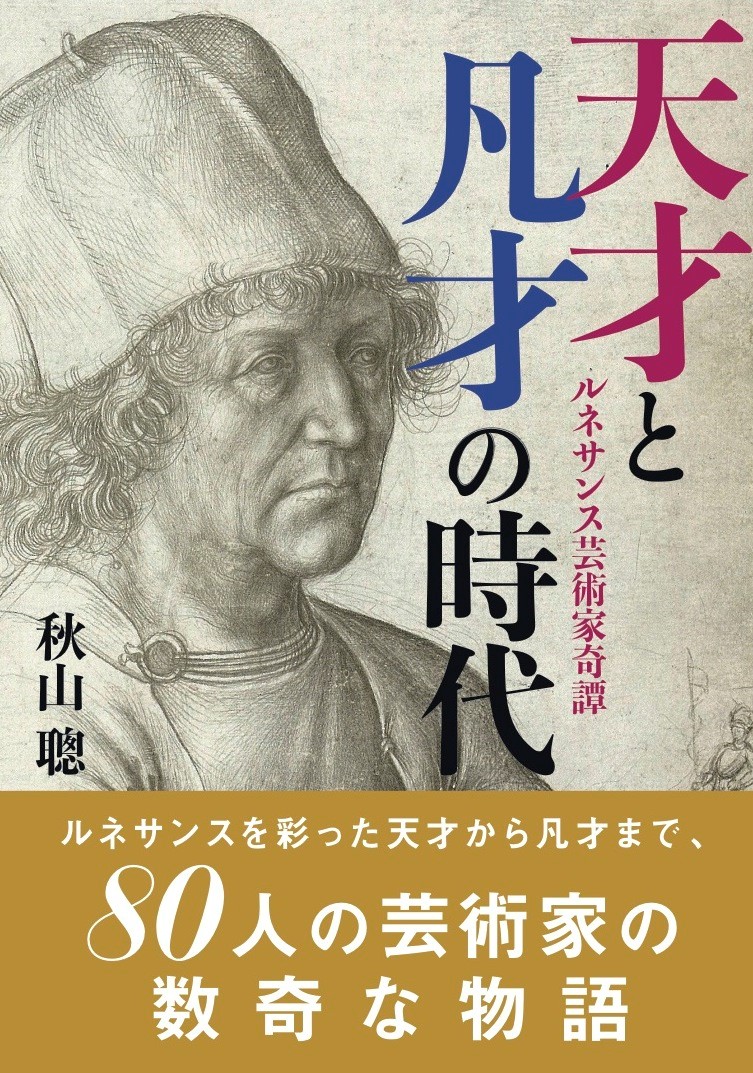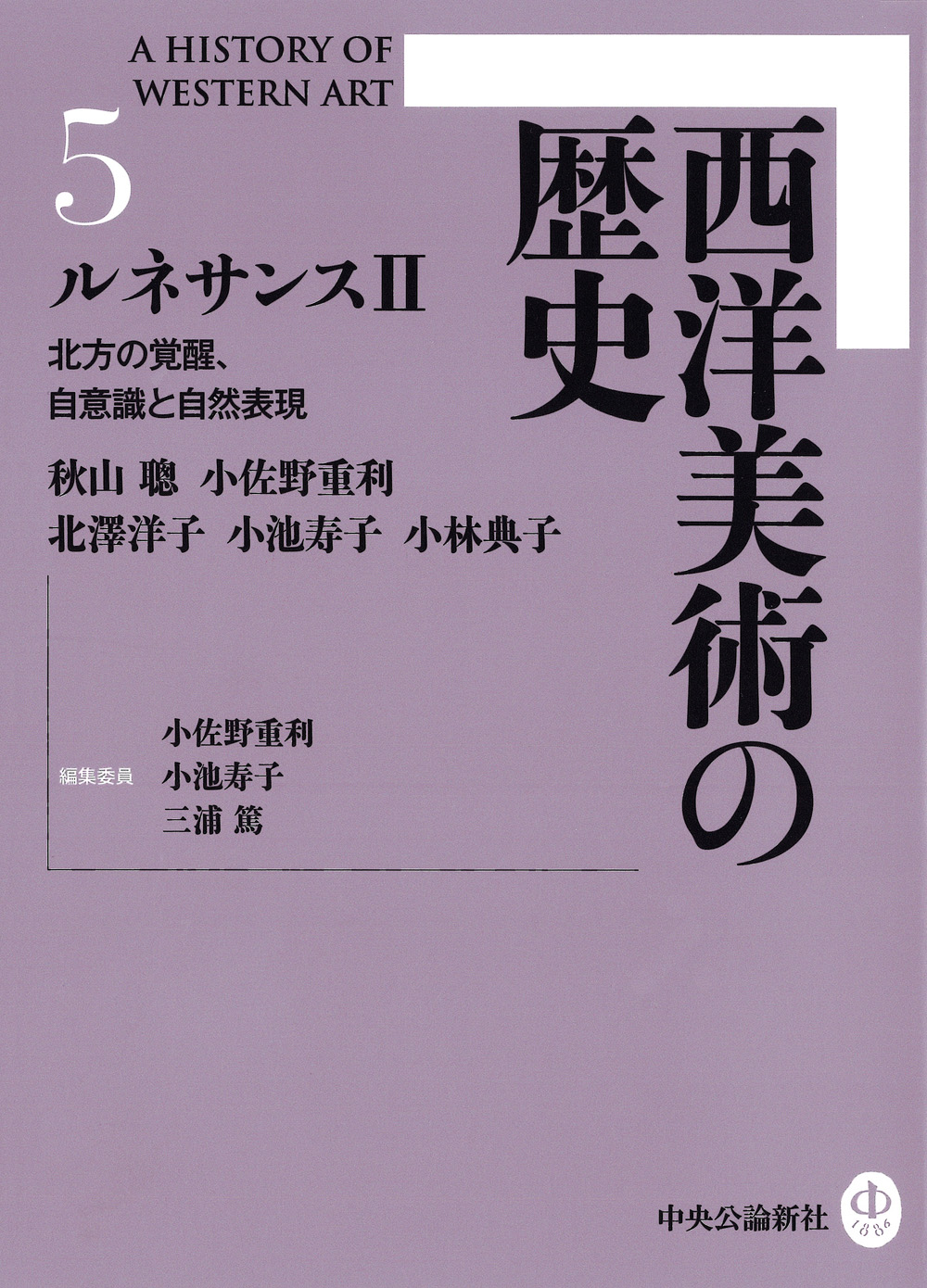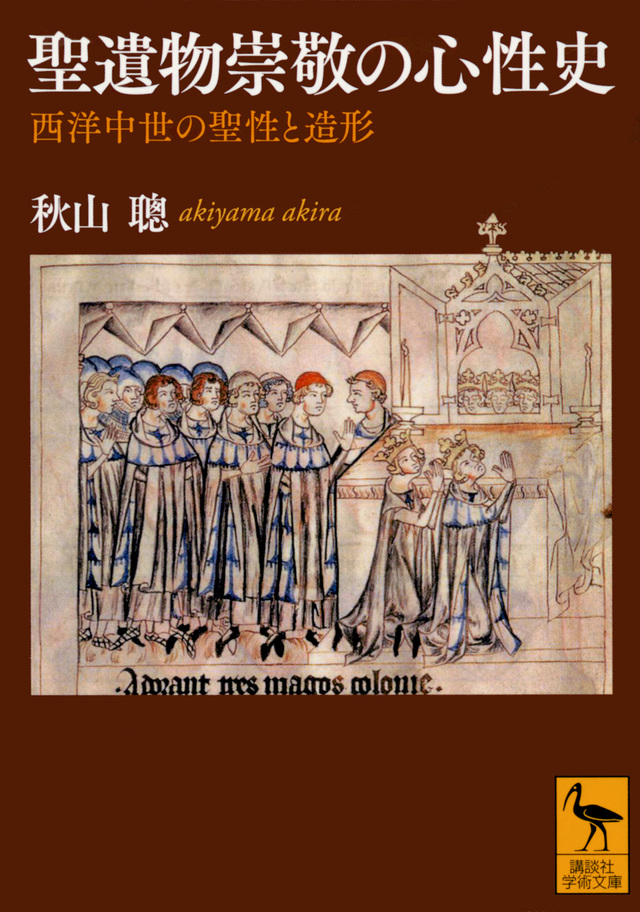
Title
The Curious Tales of Renaissance Artists Tensai to Bonsai no Jidai (The Genius and the Mundane)
Size
272 pages, B6 format, softcover
Language
Japanese
Released
January 15, 2018
ISBN
978-4-87586-534-6
Published by
Geijutsu Shinbunsha
Book Info
See Book Availability at Library
Japanese Page
“Facts” are amazingly hard to clarify. In the contemporary period of science and technology, of course, certain facts are easily identified. And yet, the information surrounding facts reported in newspapers, magazines, and on the Internet is so diverse and conflicting, it is often hard to judge what is truly factual. If it is that difficult to pin down facts now, it must surely have been even more difficult in the pre-modern era before the development of mass communication. Historians have long sought to get at facts by peeling away the tales and legends surrounding those facts, but if we can’t identify today’s facts with any certainty, how much harder it must be to identify those of the past. Instead of trying to identify the “facts” of history, therefore, we may do better to examine the tales and legends of the past to learn how people viewed the facts of their times.
The art and artists of pre-modern times were known for the most part through stories and anecdotes about the artist rather than first-hand knowledge of the artist’s work. In a time when reproduction technology was minimal at best, very few people could view the works of the masters with their own eyes. How then, did such artists as Raphael or Leonardo da Vinci become so famous? The answer is to be found in the tales, legends, and anecdotes surrounding personages of talent or genius that have abounded since the times of the ancient Greeks and Romans.
A bird mistakes an artist’s rendering of grapes as the real thing and attempts to pluck the fruit; one master artist mistakenly attempts to open curtains painted by another; a prince looking through a window from outside mistakenly greets a recently completed portrait of the king, saying “Hello, father.” There are many such far-fetched tales that have been repeated to this day. It would be easy to dismiss such stories as mere topos but by analyzing them as a group for each period of time in which they occur these anecdotes give us a glimpse into how people viewed the master artists of the past. Seemingly absurd anecdotes and legends, in other words, offer clues to how people perceived the geniuses of their times, a subject for which facts alone are insufficient. Nietzsche is said to have claimed that “three anecdotes may suffice to paint a picture of a man.” While he was referring to the ancient philosophers, his assertion is still something that can be universally applied.
Previous research on this subject includes an excellent study of the historical value of legends and myths by Ernst Kris and Otto Kurz titled, Legend, Myth, and Magic in the Image of the Artist: A Historical Experiment (first published in German in 1934. An expanded English translation was published in 1979. The Japanese translation was published in 1989 by Perikansha Publishing). This prior study brings together a wide range of anecdotes, generally dismissed as fictional, about painters and sculptors from all times and cultures to show that the portrayal of master artists as heroes and magicians can be traced back to the most ancient times. The authors also note that the improbable legends influenced the way in which artists looked upon themselves, frequently leading to a phenomenon by which these legends were “reenacted.” Contrary to the generally held assumption that facts come before legends, there are times when legends can trigger “facts.” This current book presents 80 case studies, primarily from the Renaissance period when the concept of “the arts” first emerged, of the tales and anecdotes related to the great masters and the “facts” concerning lesser, unknown artists. If there is anything new about this study, it is that we have placed odd events stranger even than myths that involve artists who are not considered geniuses side by side with the so-called legends of the great masters. There are numerous works about the geniuses of the world, but few that place the spotlight in this way on those of only mundane talent. Hence the word “mundane” in the title of this book. The sweeping foothills of the mundane are needed to push up the peaks of genius. An appropriate understanding of the place of genius in history requires knowledge of the accomplishments of the great many ordinary talents who have been lost in the cracks of oblivion. This book represents one small effort to shed light on their fate.
(Written by AKIYAMA Akira, Professor, Graduate School of Humanities and Sociology / 2019)



 Find a book
Find a book



